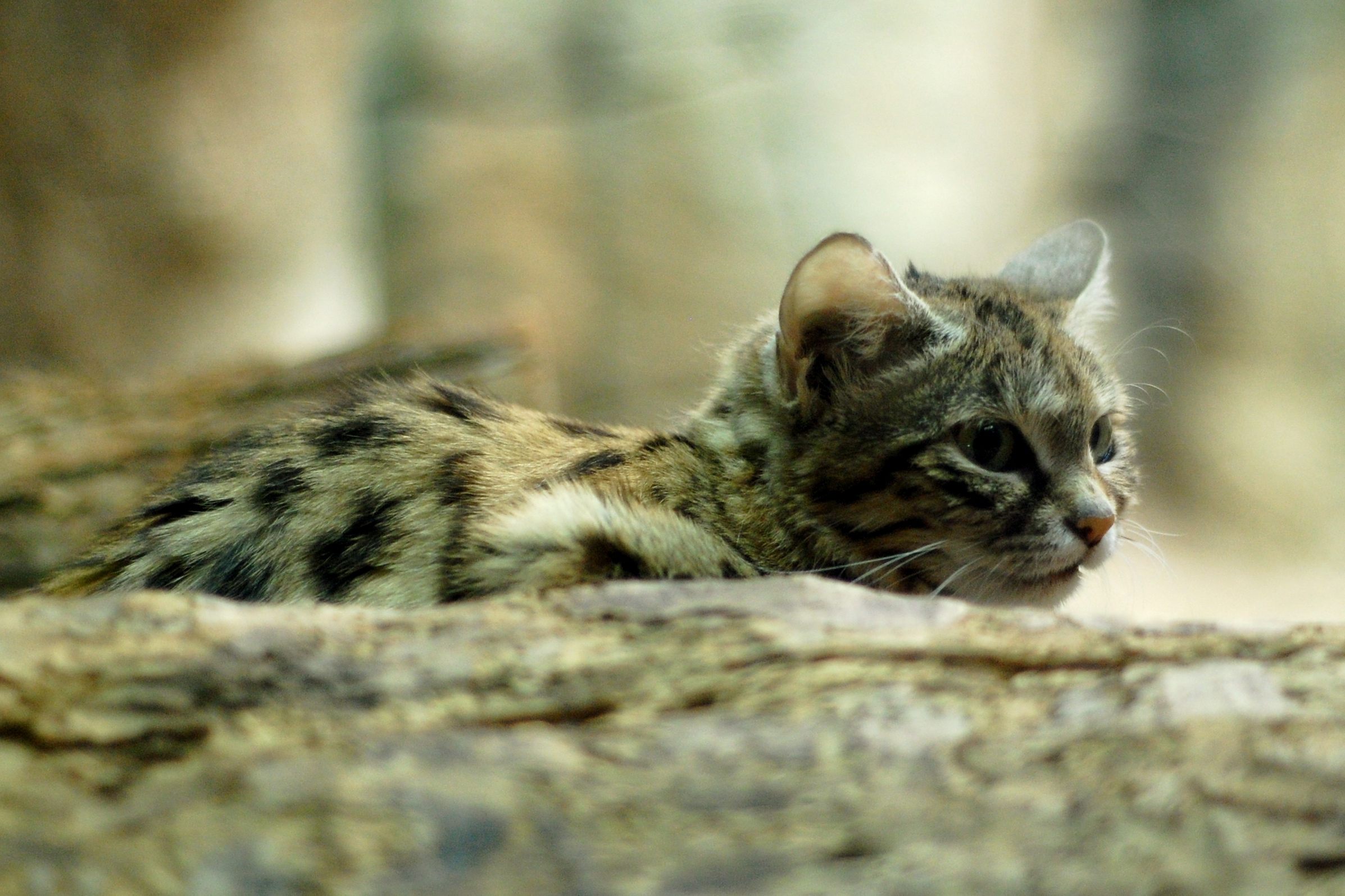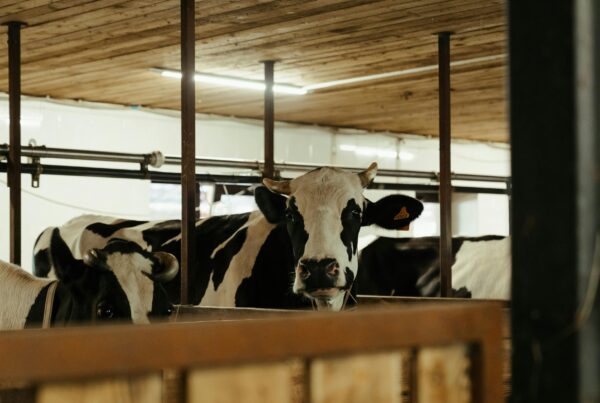The black-footed cat, native to southern regions in Africa, is one of the deadliest wildcats in the world. It stands at only eight inches tall but can bring down more prey in a single night than a leopard can in six months.
Now, this fierce hunter is facing its own challenges: As of 2019, there were only around 10,000 black-footed cats left in the world. But the Fossil Rim Wildlife Center in Glen Rose is trying to change that with the creation of a black-footed cat conservation program.
Amanda Collins, the vice program lead, joined the Standard to talk about conservation at Fossil Rim and the broader issue facing black-footed cats. Listen to the interview above or read the transcript below.
This transcript has been edited lightly for clarity:
Texas Standard: Can you describe exactly what these animals look like? I mean, they sound pretty cute, actually.
Amanda Collins: They are. They are wide-eyed little critters. They’re very small; they’re probably not any bigger than your typical-size house cat.
They actually look very similar to your house cat, although they are definitely not. They do have a tabby look about them, but they have this striped, dotted pattern in their coat so that they can help blend into the grasses in Africa.
What’s causing their decline in the wild?
A lot of it is just, unfortunately, habitat destruction and being able to find available prey.
Also, predators as well. They are very small, like I mentioned. So they’re only anywhere from three to five pounds. And so unfortunately, any larger predator, which is pretty much everything, can come by and just not be great for them.
But that prey availability is one of the biggest things that they face out in the wild.
Of course, that vulnerability is also one of its key strengths. It’s that small size that allows it to sneak through the grass and makes it such a successful hunter.
Absolutely. And they are considered the world’s deadliest cat. They do catch prey up to about 60% of the time, which is much higher than most animals, especially carnivores.
But that does have to do with their size. They catch a lot of small rodents, a lot of small insects and that helps them sustain throughout the night with their grazing habits. Being able to just catch prey consistently throughout the night as they are more nocturnal than they are diurnal.
What’s their typical prey?
Their typical prey is going to be anything from even small rodents, mice. They love to catch crickets, any kind of bug out there.
They love birds as well. There are several pictures online of black-footed cats with birds in their mouth because they are just so quick. They’re lightning fast and they can catch those birds off guard, on the ground, on a branch.
They can also jump pretty high. I don’t have that exact number on me, but they can jump about two feet, probably three feet in the air.
Are these dangerous to humans?
Well, that’s a good question, because they probably would be if they weren’t the maximum size of five pounds. They have the attitude like a lion, but they are definitely super small. So they’re not necessarily an immediate threat to a human, but I do jump when they startle me and when they go to slap at me.
We also work with cheetahs here in the carnivore department, and I don’t typically jump for them. But for the black-footed cats, I do, because they definitely mean business.
» GET MORE NEWS FROM AROUND THE STATE: Sign up for Texas Standard’s weekly newsletters
The black-footed cats are native to several different savannah regions of Africa. Why is Fossil Rim a good place to breed more?
So we are actually very similar to Southern Africa. With our climate, we have those really harsh summer times. And so obviously the black-footed cats are adaptable to those. They have those very small, very appropriately named black-footed pads on their feet. And so that helps aid them in not being burnt by that sand in Africa.
And as you can imagine, and as you probably know, our ground gets very hot here. They have a lot of grass and a lot of different substrates and things like that to help cool them down, but they are adapted for that.
And then our winter times as well. In Africa and southern Africa, you can get down to freezing temperatures, and we can here as well in Central Texas. So they are adapted to that. All of our cats do have a heated nest box area that they can retreat to if the temperatures do get below usually about 45 is when we turn it on.
Let me ask you, for the sake of my clarification, can you find black-footed cats in the wild in Texas?
No.
Not at all. Okay, so I know that you’ve had some success with breeding more black-footed cats. What’s the long-term plan for helping the wild population?
So long-term plan — being able to reintroduce carnivores into a wild landscape is notoriously pretty difficult, even for United States carnivore species. So, eventually, if their population got to that point, that is obviously something we would look at. But as of right now, it’s really to just increase the genetics and create a genetically healthy backup population here in the United States if for any reason something happens to their wild population.
You can think of it as two worlds. If we have one world here that has a really genetically healthy population and something happens like a bottlenecking effect or anything out in Africa, we have those genetics to be able to perform different things like artificial insemination, in-vitro fertilization, which are also techniques that we are trying to perfect here in the [United] States to be able to apply those to the wild population.
I hope you won’t mind me asking you a personal question here. Why the black-footed cat? What motivates you to work to conserve this population specifically?
So before I came to Fossil Rim, I did not really work with any black-footed cats or small cats in general, but they are just so charismatic.
When you think of charismatic animals, especially in zoos, you don’t really think of these small little critters – you think of lions and tigers – but these guys are hugely personable, from a protected contact scenario. I don’t go in there to cuddle them, but they have huge personalities. They’re really amazing to work with. Plus they’re adorable, so that obviously makes it 10 times better.
They’re just really amazing. They just have the unique ability to be able to be such a successful hunter. And they’re one of the smallest cats out in Africa. So, to give them credit where credit is due, it’s just really amazing to know that they can survive out in such a harsh environment and being so small at their size.
Do you give them names? What are some of them? You mind me asking?
We named one Smidgen. And then the litter mate was named Tad. So, you know those cute little measurement names.
We usually stick with some theme. So, we have one female. Her name is Afreyea, but we call her Small Fry for short. She just had a litter last year, and we named them Yukon and Russet.













